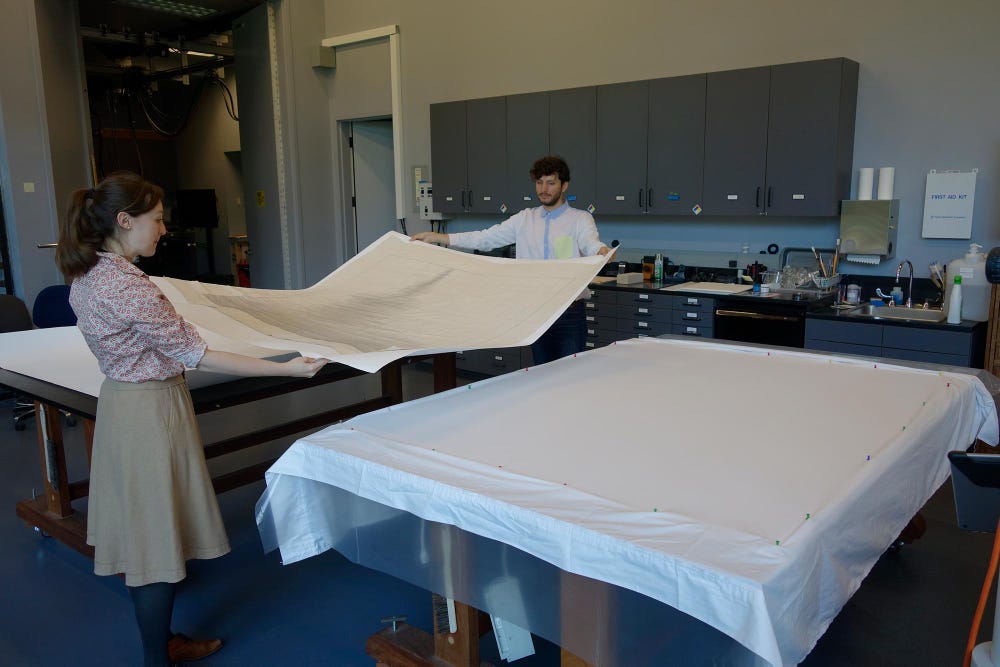When Alan Sonfist’s California Earthquake came to the Paintings Conservation department for treatment, my first thought was: This graphite drawing on canvas is more a drawing on a textile than it is a painting. As such, the artwork fell between conservation specialties, and its treatment required collaboration among the Paintings, Paper, and Textiles Conservation departments at the Museums.
This drawing on canvas was born from Sonfist’s idea that natural disasters should be honored as historical events. Here, the artist immortalized in pencil the seismograms for two earthquakes, which occurred in October 1, 1969 in Santa Rosa, CA. The selection of this piece for the exhibition Wild West: Plains to the Pacific prompted the assessment of several creases that cut across the drawing and were visually distracting.
California Earthquake before treatment
California Earthquake after treatment
We contacted Sonfist’s studio in New York to provide insight on how to treat and display this artwork. The studio requested that we remove the creases and pin the work to the wall during installation. Instead of pins, I suggested using rare earth magnets to avoid piercing the canvas and fraying the edges. Sonfist’s studio agreed to this installation method.
Overall humidification with textile conservator Anne Getts
As with every conservation treatment, our approach was incremental. After testing with small-scale mock-ups, we humidified the artwork in a humidity chamber. This treatment relaxed many of the lesser creases but the strongest still remained, and we needed a new approach.
Stretching the painting onto a temporary wooden frame
As a next step, we stretched the canvas onto a temporary stretcher with Velcro clips and relaxed the wrinkles from the reverse using distilled water and a warm conservation iron. We removed graphite smudges along the wrinkles with a fine Mars eraser pen. This treatment reduced the creases without overly flattening the canvas, respecting its draped fabric appearance.
Removing graphite smudges with an eraser
Text by José Luis Lazarte.










